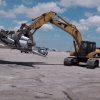I don't think IFS is 40 hours. Plus I doubt you'd have all the other blocks checked - cross country, local solo, cross country solo, night. Probably won't have learned all the required maneuvers to the proficiency to pass the check ride either.Not wanting to derail, but quick question regarding civilian flying in the Mil from someone working on their PPL-H at a slow rate.
To fly on the civilian side, you basically just need to pass a FAA check ride to get your PPL since your hour requirements are already met and your FAA exam was taken in IFS right? Does the same work for your instrument ticket too?
Wait until you are winged, go to the FSDO and get all your eligible tickets for free.

